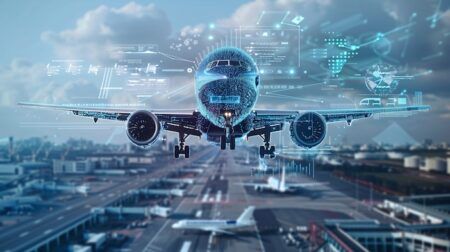While most passengers fixate primarily on ticket costs, inflight purchases wind up generating significant income for airlines. That said, however, such purchases could also be doing even more for the airlines – and are likely to do so in the near future.
As of now, it’s understood that the bulk of inflight revenue comes from alcohol purchases. According to a Metro write-up on airline surveys, alcohol sales on US domestic flights alone can generate upwards of US$40 million (roughly £30 million) in just four months. Those numbers were found in 2014, and again apply only to US flights, but they provide a fairly clear picture of just how lucrative on-board alcohol sales can be.
This is going to continue to be the case. Alcohol sales will always be lucrative, and this is a proven, reliable way for airlines to generate revenue. But where airlines can actually increase revenue is primarily through wi-fi and inflight shopping. Both of these things are already widely available but are not yet as sophisticated as they need to be for airlines to maximise profits from them. That said, we appear to be on the cusp of improvements.
On the inflight wi-fi front, the fact is that technology already far outpaces what’s actually offered to passengers during flights. And it appears that services will soon be tapping into this technology in order to provide better experiences. Most notable might actually be this recent look at Gogo’s connectivity. As reported in July, Gogo has announced that it is now going to allow passengers to connect to its inflight internet service at 3,000 feet, as opposed to 10,000. This gives passengers more time with a connection (whereas the 10,000-foot threshold can cut 15 or 20 minutes off of internet time on either end of a flight). It will also incentivise people on shorter flights to go ahead and connect, where they may not have before. Gogo’s changes will also include some “modifications to the network,” which we can only hope means stronger connections.
This, coupled with some other network improvements from other providers, should serve to get more passengers online, more frequently, and for longer periods of time. The next key challenge is for airlines to make it easier for those passengers to make purchases – which is where some new processing services can come into play.
The airline payment solutions highlighted on FIS Global, show how things are moving in the right direction on this front as well. As those updates convey, “cutting-edge payment technology” that can enable “seamless commerce” are now available to airlines. These technologies can work in slightly different ways, but the idea is that they make it easier and more convenient for passengers to spend money online – and thus lead to more conversions. In many cases, as things are today, payment on a plane (or even in a terminal) can be a slow, clunky process. But improved processing can streamline it, making passengers more likely to buy wi-fi, and more likely to make purchases once connected as well.
The initial benefit of these combined upgrades – better connections and better payment processing – is clear. More people will use wi-fi, and through that wi-fi there will be more purchasing (say, of premium inflight services or digital inflight magazine items). Beyond these benefits though, we would also expect to see a more digital flying experience yield new opportunities. That’s a speculative point, but if more customers are online and payments are easier, it stands to reason that airlines and affiliated services will figure out more paid services to offer.
Considering the significant and widespread potential of these kinds of upgrades, it’s no wonder that projections for inflight revenue growth are fairly lucrative. A Quartz article on in-flight Wi-Fi projected that it will become a US$130 billion (roughly £97.2 billion) global market by 2035, generating some US$30 billion (£22.4 billion) in ancillary revenue for airlines around the world.
No wonder there’s clear movement toward improving this aspect of air travel.





